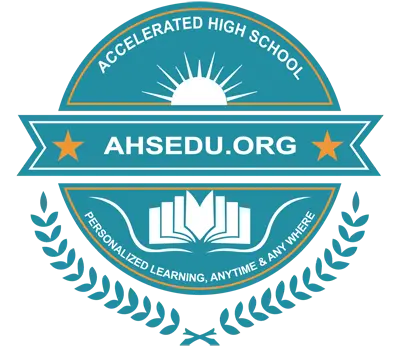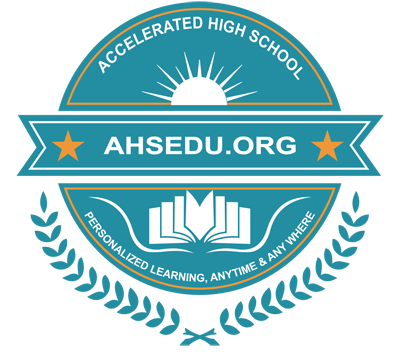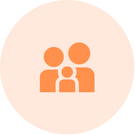Accelerated High School
Standardized Curriculum of Computer Science-III
In the 21st century, computers and technology are everywhere. It's essential for everyone, including kids like you, to understand how computers work. When you learn about computer science, you discover how to solve problems using computers and create amazing apps. This helps you think deeply about important things that affect you and your community. You can help make decisions about things like computers, staying safe online, and coming up with new ideas to solve problems in our neighborhood and worldwide. It's like being a super smart superhero who uses technology to make the world a better place.
Mission:
ALL students learn basic concepts about computers, stepping into windows, the basic word processing, the basic architecture of computers, basics of virtual reality. The instruction focuses on developing an understanding of computers and the new approaches necessary to solve critical challenges that we, as American citizens, will need to harness the power of computing technology. Rapidly changing technologies and the proliferation of digital information have permeated and radically transformed learning, working, and everyday life. To be well-educated, globally-minded individuals in a world where computing technology is essential, students must clearly understand computer science concepts and practices.
Vision:
Prepare students to become technologically literate individuals who can effectively:
- Understand Basic Computer Concepts: Learn basic concepts about computers, their different parts, and the purpose of each component.
- Develop Basic Word Processing Skills: Gain foundational skills in basic word processing.
- Explore Basic Shapes and Drawing Skills: Learn and practice basic shapes and drawing skills using digital tools.
- Understand Basics of Multimedia: Develop an understanding of multimedia concepts and tools.
- Learn Digital Citizenship: Understand the concept of digital citizenship and its importance in the digital world.
- Introduction to Virtual Reality (VR): Explore the basics of virtual reality and its applications, and learn about VR technology and how it is used in various fields.
- Solve Critical Challenges Using Technology: Develop new approaches necessary to solve critical challenges using computing technology.
- Adapt to Rapidly Changing Technologies: Stay informed and adaptable to the rapidly changing technological landscape that transforms learning, working, and everyday life.
- Engage in Discussions and Investigations: Participate in discussions and conduct investigations to solve problems, focusing on the strength of evidence used to generate claims.
- Evaluate Digital Information Sources: Read and critically evaluate multiple sources, including technology-related articles and web-based resources, to understand current and past technological problems and solutions, and develop well-reasoned claims.
- Communicate Technological Ideas: Effectively communicate ideas through reports, presentations, and digital media that explain and argue technological concepts and solutions.
This vision aims to equip students with the knowledge and skills necessary to thrive as well-educated, globally-minded individuals in a world where computing technology is essential.
Spirit and Intent:
The curriculum at Accelerated High School (AHS) is designed to align closely with several educational standards, including the New Jersey Student Learning Standards for Computer Science [NJSLS-CS] introduced in 2023, the Student Learning Standards for Career Readiness, Life Literacies, and Key Skills, as well as the Student Learning Standards for Personal Financial Literacy and the New Jersey Preschool Teaching and Learning Expectations. This comprehensive alignment ensures that students receive a well-rounded education that covers computer science concepts and their real-world applications. By aligning with these state standards, AHS provides students with access to a wide range of practice questions carefully crafted to address each specific standard. This approach facilitates effective learning and helps students master essential skills.
Three Dimensions of AHS Science Curriculum:
At Accelerated High School (AHS), our science curriculum is designed around three key dimensions that reflect what students should know and be able to do. These dimensions are like our guiding standards. They're written in a way that helps us assess students' understanding and allows for flexibility in how they demonstrate their skills.
Computer Science Core Idea
|
Disciplinary Core Idea |
Performance Expectation |
|
Understand Basic Computer Concepts |
Identify different parts of a computer and their purposes. |
Computer Science and Engineering Practice
|
Computer Science and Engineering Practice |
Performance Expectation |
|
Engage in Discussions and Investigations |
Participate in computing and internet safety discussions. Conduct investigations to generate evidence-based claims. |
Crosscutting Concept
|
Crosscutting Concept |
Performance Expectation |
|
Adapt to New Technologies |
Learn about new technologies and how to use them. |
The New Jersey Student Learning Standards for Computer Science (NJSLS-CS), students need to engage in learning experiences that are meaningful, build upon each other, and encourage continuous improvement. These experiences go beyond just reading about coding concepts. They involve active learning opportunities where students can apply their knowledge and skills. By participating in cumulative and progressive experiences, students can strengthen their understanding of computer science and improve their ability to solve problems and explain their solutions effectively.
Curriculum for Grade-III Computer Science:
Standard 1: Computing device
Learning objectives:
- Individuals use computing devices to perform a variety of tasks accurately and quickly.
- Individuals collect, use, and display data about individuals and the world around them.
- People work together to develop programs for a purpose, such as expressing ideas or addressing problems.
Topics of AHS-CS:
A. Introduction to Computer
- Computer
- Components of a Computer
- Working of Computer
Standard 2. Windows
Learning objectives:
- Computing devices interpret and follow the instructions they are given literally.
- Individuals collect, use, and display data about individuals and the world around them.
- Computers store data that can be retrieved later. Data can be copied, stored in multiple locations, and retrieved.
- A sequence of steps can be expressed as an algorithm that a computer can process.
Topics of AHS-CS:
B. Introduction to Windows
- Stepping into Windows
- Working with windows
- Managing files and folders
Standard 3. Word Processing
Learning objectives:
- A computing system is composed of software.
- Computers store data that can be retrieved later. Data can be copied, stored in multiple locations, and retrieved.
- A sequence of steps can be expressed as an algorithm that a computer can process.
- The development of a program involves identifying a sequence of events, goals, and expected outcomes, and addressing errors (when necessary).
- Computing devices interpret and follow the instructions they are given literally.
Topics of AHS-CS:
C.Intermediate Word Processing Skills
- Advanced word processing skills.
- Introduce more complex formatting.
- Introduce features such as bullet points and numbering.
- Introduce features such as basic page layout.
Standard 4.Computer Architecture
Learning objectives:
- People work together to develop programs for a purpose, such as expressing ideas or addressing problems.
- Technology has changed the way people live and work.
- Individuals collect, use, and display data about individuals and the world around them.
- Various tools can improve daily tasks and quality of life.
Topics of AHS-CS:
D. Understanding Computer Architecture
- Explore the basic architecture of computers.
- Understand the roles of the CPU in computer systems.
- Understand the roles of memory and storage in computer systems.
- Learn how data is processed inside a computer.
Standard 5. Virtual Reality (VR)
Learning objectives:
- Computing technology has positively and negatively changed the way individuals live and work (e.g., entertainment, communication, productivity tools).
- Computer networks can be used to connect individuals to other individuals, places, information, and ideas. The Internet enables individuals to connect with others worldwide.
- Connecting devices to a network or the Internet provides great benefits, but care must be taken to use authentication measures, such as strong passwords, to protect devices and information from unauthorized access.
Topics of AHS-CS:
E. Introduction to Virtual Reality (VR)
- Explore the basics of virtual reality and its applications.
- Learn about VR technology and how it is used in various fields.
Standard 6. Coding
Learning objectives:
- Computers follow precise sequences of steps that automate tasks.
- The program development involves identifying a sequence of events, goals, and expected outcomes, and addressing errors (when necessary).
- Programs can be broken down into smaller parts to facilitate their design, implementation, and review. Programs can also be created by incorporating smaller portions of programs that already exist.
- Individuals develop programs using an iterative process involving design, implementation, testing, and review.
- A sequence of steps can be expressed as an algorithm a computer can process.
- Real-world information can be stored and manipulated in programs as data (e.g., numbers, words, colors, images).
Topics of AHS-CS:
F. Music making
- Make Music
- Sound Recording
- Animated sprite
- Gliding of Sprite
- Make Cheese Game
Standard 7. Programming Language
Learning objectives:
- Individuals develop and follow directions as part of daily life.
- The program development involves identifying a sequence of events, goals, and expected outcomes, and addressing errors (when necessary).
- A sequence of steps can be expressed as an algorithm a computer can process.
- Computers follow precise sequences of steps that automate tasks.
- Real-world information can be stored and manipulated in programs as data (e.g., numbers, words, colors, images).
- Computers follow precise sequences of steps that automate tasks.
- Programming languages provide variables, which are used to store and modify data.
- Programs can be broken down into smaller parts to facilitate their design, implementation, and review. Programs can also be created by incorporating smaller portions of programs that already exist.
- Individuals develop programs using an iterative process involving design, implementation, testing, and review.
Topics of AHS-CS:
G. Programming Language
- Python
- Lua







